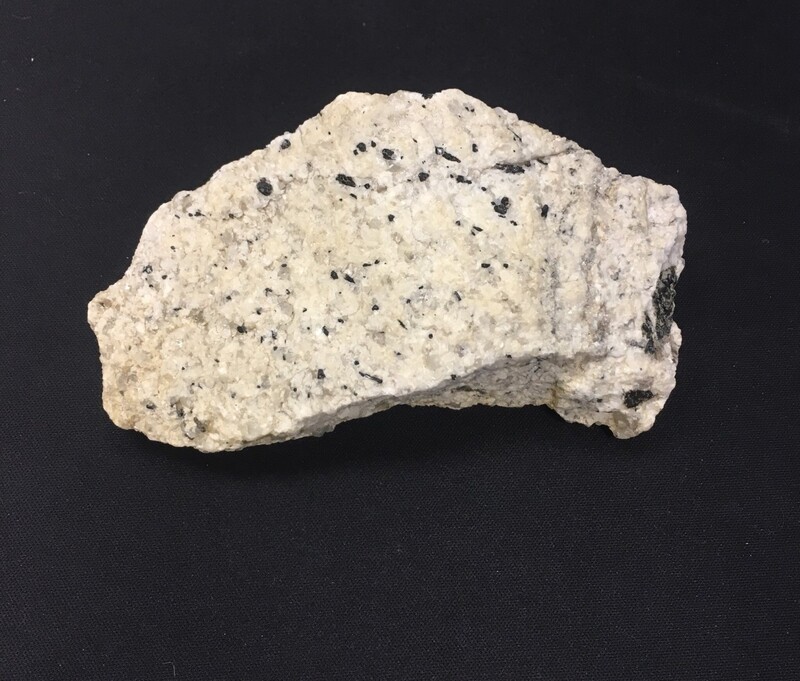Introduction
RESEARCH QUESTIONS
- What is the age of the Everest Base Camp (EBC) trekking route leucogranites’ crystallization?
- Did the EBC trekking route leucogranites undergo multiple phases of metamorphism?
- Can trace/REE composition and age dates assist geologists with determining the presence of hydrothermal ore and rare-metal mineral deposits in this region?

Tenzing Norgay statue at the Sagarmatha National Park Museum in Namche Bazaar. Norgay is holding a pick aloft in his right arm. The silhouette of Mt. Everest is centered directly above the pick. Source: Brooklyn Boatright

Mantle convection, the process by which tectonic plates move, is illustrated here. New crust is created at ridges and old crust is recycled at subduction zones. Mantle convection is a component of the plate tectonics theory. Source: Brooklyn Boatright (modified from USGS, 1999)
BUILDING THE HIMALAYA MOUNTAINS
The Himalaya Mountains are well-known globally for housing Mt. Everest, the highest mountain peak in the world at 8,848 m (29,034 ft). The mountain range itself spans across five countries and is ~2,400 km in length (1,500 mi). But how did the mountain range get there? What is strong enough to push a pile of rocks so high that they nearly breach the troposphere?
MOVING PLATES
Plate tectonics are the sole creator of the Himalaya Mountains. The plate tectonics theory states that Earth's surface (the crust) is broken up into plates that are "floating" on top of the mantle. These plates are extremely large but are able to move via convection currents in the subsurface; hot molten rock in the mantle rises, cools, sinks, heats up, and starts the cycle all over again. There is no force capable of stopping the plates on Earth's surface from roaming around (albeit slowly) and colliding with each other. When they do collide, the rules of density determine the outcome—in the case of the Himalaya Mountains, primarily uplift.
Around 50 Mya, the Indian plate collided with the Eurasian plate. Some of the Indian plate was subducted under the Eurasian plate, experiencing ultra-high pressure and subduction melting. But as the two plates were forced together, they began to pile on top of each other (uplift). This mountain-building process is known as orogenesis and it is how the Himalaya Mountains were created.

An example of leucogranite. This sample is from the Himalaya Mountains. The overall light color of the sample, speckled by small, infrequent dark minerals, is evident. Source: Brooklyn Boatright
LEUCOGRANITES
About 20-10 Mya after the Indian and Eurasian plates collided, a rock called "leucogranite" began forming. Leucogranites are a light-colored igneous rock with few dark minerals. They are not exclusive to the Himalaya Mountains; leucogranites are commonly associated with continental collision orogenies around the world. At some point during the thickening caused by the Indian and Eurasian plates, magma was generated by partially melting the continental crust near the root of the mountains, close to the mantle (anatexis). This magma is the source of the leucogranites. Despite the seemingly straightforward conception of leucogranites, geologists cannot agree on how exactly they formed.
FORMATION
There are many hypotheses regarding how the leucogranites formed. Among all of them, it is generally assumed that the leucogranites were formed by anatexis. Dissent is generally associated with the settings necessary for melting, such as the heat source and the method by which the parent magma moved from the source to where the leucogranites crystallized.
Among the numerous hypotheses geologists have come up with, three primary themes stand out. The hypotheses for each are listed below:
- Melting
- decompression during exhumation
- prograde during continental subduction
- heat generated from radioactive elements
- heat generated from thickened continental crust
- muscovite-dehydration melting
- biotite dehydration melting
- Volatile content
- vapor absent
- vapor present
- Magma differentiation
- fractionation
- multiple pulses
Each hypothesis has a significant amount of evidence to back it up. This research aims to contribute to the discussion by considering the timing in which the leucogranites along the Everest Base Camp trekking route were emplaced and how they evolved.
MINERAL GEOCHRONOMETERS
Himalayan leucogranites contain zircons, a useful key for determining leucogranite crystallization age. Zircon crystals incorporate uranium (U) during formation at high temperatures. Once the zircon cools below 800 degrees Celsius, U and other trace elements are no longer able to freely diffuse in or out of the crystal. The high closure temperature of zircon is a primary reason why it is used as a mineral geochronometer, or a mineral which is used to age-date the rock containing it. Uranium naturally decays into thorium (Th) and lead (Pb), two elements which are not easily incorporated into zircon during formation. This means that any Th or Pb found in a zircon crystal presumably formed after the zircon crystallized.
Unfortunately, the major drawback of using zircon as a mineral geochronometer also relies on its stability at high temperatures and pressures. It's resistance to melting and deformation means that it may ultimately be inherited in a younger rock which formed from a different parent melt than what the older, original zircon formed from. Therefore, when dating zircon in an igneous or metamorphic rock, caution must be exercised. The resulting age-dates may not represent the host rock the zircon was included in.
